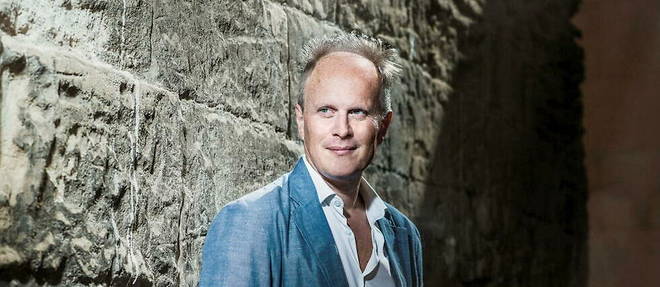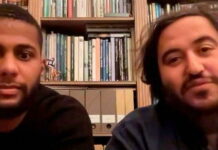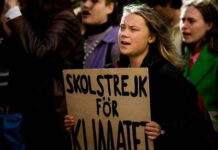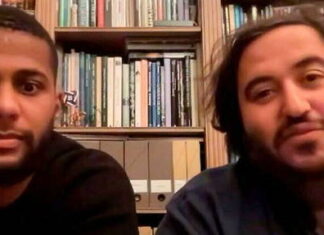Long at the head of the Esther Schipper art gallery in Berlin, then of Paris Photo, Christoph Wiesner took over the direction of the Rencontres d’Arles in 2021. Willingly quoting Pasolini and his famous article called “fireflies” (where the author of the Ragazzi noted the disappearance of the poetic glimmers of nature in favor of a commercial hedonism and a robotization of power) or the rebellious injunctions of the activist and feminist critic Lucy Lippard, he considers the photo as a stethoscope capable of taking “the pulse of the world. For Le Point, a partner of the Rencontres since 2007, he details the program for the 2022 edition.
Le Point: This is your second year at the head of the Rencontres de la photographie. What are the axes of this Arles 2022?
Christoph Wiesner: There are two. The first has always interested me: the relationship between photography and performance in the broad sense, masterfully illustrated by the work of Babette Mangolte, who documented the New York dance scene in the 1970s, or by that many female artists, from Cindy Sherman to Martha Wilson, who use photography as a medium of protest against the necessarily male cult of the artist. We will see it through the exhibition “A feminist avant-garde”, from the Verbund collection, based in Austria, and never presented in France. But I also want us to be able to compare these politically committed positions with a more introspective work on the human being. This is the case, for example, of “Cartography of the body”, by Susan Meiselas: on a musical composition by Marta Gentilucci, she captures and restores all the beauty of the hands of old women performing simple and daily gestures (making pasta, carving an olive tree…).
There is also particular attention paid to the question of nature. The tree seems in majesty, this year, in Arles.
Yes, because it is impossible to talk about the human today without putting nature in the spotlight. The exhibition “Ritual Unusual” alerts the visitor to the fact that in Chile, massive cloning is now creating “geometric forests” to feed the paper industry, pushing the Mapuche Indians far from their original territory and signing the disappearance of a spiritual relationship to nature and medicinal plants. The question of territory is also at the heart of the work of Julien Lombardi, a young photographer from Marseille who uses the images taken by the Google car when it surveyed the sacred territory of the Huichol Indians. In doing so, he adds elements to it, creates a picture from his own perception, like Noémie Goudal when she works on the idea of ”deep time”, that of the geological history of the planet and paleoclimatology. I am indeed attached to the idea that these Meetings do not serve a unambiguous purpose, but offer a kaleidoscope of looks.
Feminism, ecology… Fundamental themes, which today fortunately form a consensus. But how do you escape the risk of an overly “expected” festival?
By giving voice to people who place themselves in an equally essential reverse shot. I’m thinking of Lucas Hoffman, for example, who, at the time of the all-instantaneous, worked in a room in the middle of the street… the theme of the cloud (“Songs of the Sky”), which will also deal with the “cloud”, will amaze many people. The Discovery Awards, which highlight young artists, like Mika Sperling, will sometimes even shock, and so much the better!
I am attached to the idea that these Meetings do not serve a single purpose, but offer a kaleidoscope of looks.
Today we are bombarded with images. And earlier and earlier. Are the Arles meetings intended to educate the eye?
I would like to. Really. In one “Instagram break” you sometimes look at 2,000 images that will mostly be chased away by the next break. Bursts of images that can dilute the value of the photo but also generate, in reaction, new approaches, more thoughtful, more written, of the image. Our role is also to help viewers discover and read them. The late Sabine Weiss, whom we honored last year, liked to define herself as an image maker more than an artist. Today, many young photographers claim a more arty approach to this hyperproduction and hyperdiffusion of clichés. Arles remains a laboratory for images of the future. The “Suburban Hantology” exhibition by the duo Arash Hanaei / Morad Montazami immerses visitors in the world of augmented reality and algorithms, through a reflection on the architectural utopias of the 1960s and the contemporary phenomenon of gaming. “The Interposed Veil”, at the Saint-Césaire Convent, on the evolution of immersive technologies, questions us about what we really want by testing our ability to distinguish between the real and the virtual. Because in Arles, this year, we are even exploring the metaverse!
https://www.rencontres-arles.com/
Tuesday, July 5
“Refugees. Geopolitics of exile »
Avec Nathalie Herschdorfer, Pascal Hufschmid, and Maryna Semenkova.
Moderation: Christophe Ono-dit-Biot.
Wednesday, July 6
“Ukraine-India. Document a company. Changing perspective »
With Tatiana Pavlov, Evgeniy Pavlov, Nicolas Liucci-Goutnikov, Mitch Epstein.
Moderation: Christophe Ono-dit-Biot.
Thursday, July 7
“Women at the forefront”
With Susan Meiselas, Kristin Potter, Vanessa Winship.
Moderation: Christophe Ono-dit-Biot.
Friday, July 8
“Poetics of the tree, politics of the forest”
Avec Alona Pardo, Léa Habourdin, Sergio Valenzuela Escobedo.
Moderation: Baudouin Eschapasse.
Saturday July 9
“Photographing on the African continent: how to go beyond the borders of the visible? »
With Untitled Duo, Bénédicte Kurzen, Seif Kousmate.
Moderation: Valérie Marin La Meslée.


















